ONCE UPON A WEBSITE, a thrift object bought initially for $1 was sold for $62 by simply attaching a story to it. You might remember this case from one of our previous articles on creating a story around your product.
Today, however, we are going to look at what other pages on your eCommerce website, apart from the product detail page, you can add a narrative to boost your conversions. We will also inspire you with a few truly amazing implementations.
A little bit of science behind
Humans are storied creatures who find meaning and interpret their lives through narratives. Storytelling is deeply ingrained in our human experience and neurology.
Experiencing a story alters our neurochemical processes, and stories are a powerful force in shaping human behavior. In this way, stories are not just instruments of connection and entertainment but also of control.
Stories will affect the release of oxytocin into the blood, a so-called “love” hormone that helps people bond. (It is, in fact, the same hormone that’s released into the bloodstream of breastfeeding mothers.) The release of oxytocin motivates us to engage. That is why stories are more emotionally compelling – they captivate us and make us more sensitive.
Below is the infographic of how stories change our brain:
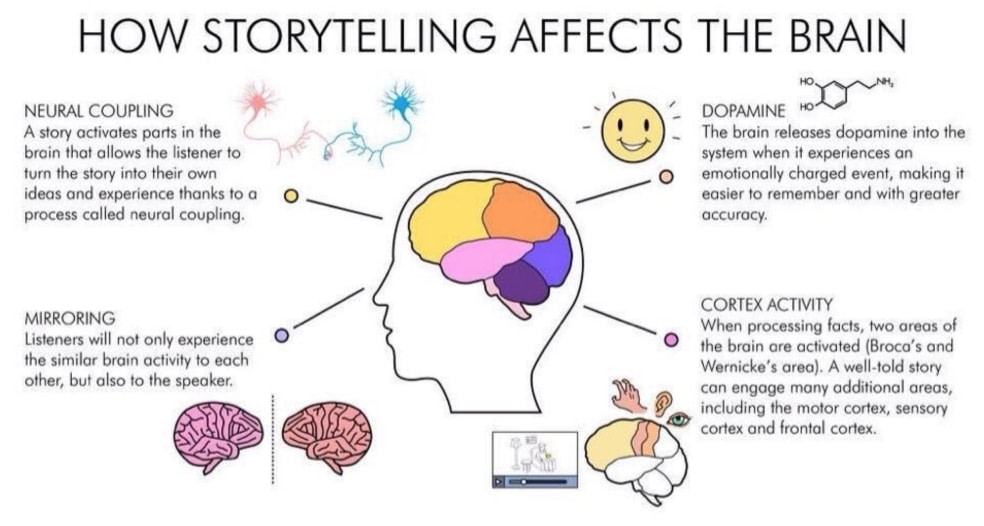


But, do stories really affect something as transactional as eCommerce? Or, can you use stories to control your customer purchasing behavior?
Absolutely!
Though, many entrepreneurs struggle to apply the principles of storytelling to business. Why? Because to unleash the power of stories in eCommerce, what you need isn’t just a lot of flowery language. Instead, eCommerce storytelling means framing your content to create a narrative around your company and the goods/products it sells. Everything you post on your website about your company and your offerings is part of the story.
Storytelling elements
Let’s start by looking at some elements of an eCommerce story. A story should have:
- THE HERO
- THE GOAL
- THE SUPPORTER
The Hero
The biggest mistake businesses make with storytelling is casting their company and product as the hero. Allow me to be as blunt as possible: your visitors don’t care about your company … they care about themselves. Your company is not the hero. Your customer is.
Instead of making yourself the centerpiece of your eCommerce stories, build them around your audience. The easiest way to make your customer the hero is to utilize user-generated content (UGC) from current customers in your ads themselves.
For instance, rather than serving up brand-centric content, SacrificeNow (fitness wear for women) leverage a host of micro-influencers in their offsite and onsite campaigns.
SacrificeNow then uses those same UGC images on their home page:
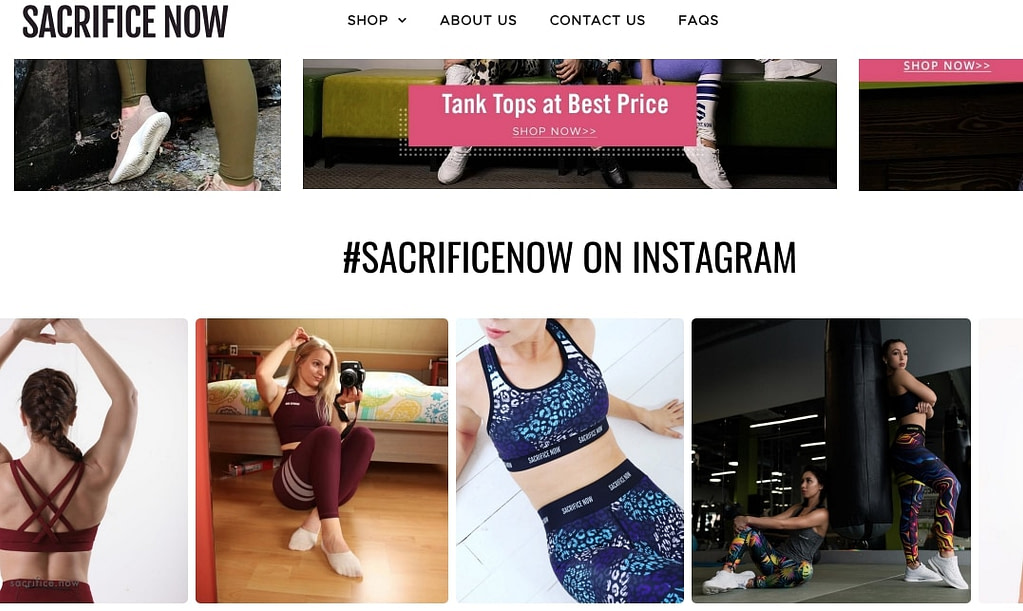


The customer-as-hero theme becomes pronounced when you have the Instagram Feed Widget add-on installed. This add-on embeds your Instagram video and photo feed on your marketplace storefront. With it, you will promote good feelings of the customers using your product and build a strong emotional bond.
The Goal
Now that your eCommerce story has a hero, the next step is crafting a goal. And again, the goal is not about you … it has to be about your customer.
For that, you need to climb into the mind and heart of your customer:
- What emotions and feelings are associated with your product?
- What are the tangible outcomes your customer wants?
- How will they feel afterward (e.g., post-purchase)?
- Who will they become in the process of pursuing their desire?
- Where will they end up after the desire is achieved?
To help you frame the goal in your own mind, ask yourself two questions that make the buying journey about salvation not sales:
- What hell does my customer want to be saved from?
- What heaven do they want to be delivered unto?
Some products may not lend themselves to deep desires, like wrist bracelets from Pura Vida. But that’s precisely why they spend so much time in their videos focusing on their philanthropic efforts. They donate to charity from each sale made:



For UrbanKissed, hell isn’t merely wearing poor-quality clothes bought in fast fashion stores; it’s living in the environment so heavily polluted by the production and transportation of fast fashion clothes. That theme carries over directly into their “Plant a Tree” newsletter campaign:



The Supporter
So far, each of the elements had a focus solely on your customer. The final element of an effective eCommerce story is … you.
How? By including yourself alongside your hero in the quest for their goal.
You should be the “how”, not the who (the hero) or the why (the goal).
To illustrate this, let’s go back to UrbanKissed. While their products help customers to achieve both the heaven of style and contributing to living in a cleaner world, perhaps the best example of that story is on “Slow and Ethical Index” page.
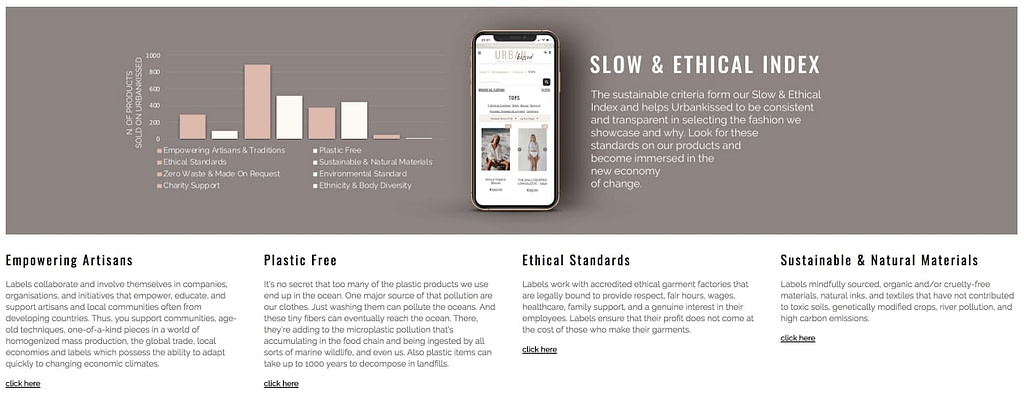


Notice how UrbanKissed positions themselves not merely as women apparel, but as supporters in their customer’s quest to find:
- A community of like-minded people conscious about the environmental issues
- Elegant clothing
- Affordable sustainable looks
- Exclusivity
- Belonging
- Happiness
Other places where you can reinforce your support are package, subscription, why shop with u pages, newsletters. This last element is the most critical to a sales-worthy story. It is a promise you give to your customer. Place your customer front and center as well as highlight the trust factor.
And another example of support comes from Pura Vida’s subscription packages page:



Where Can You Apply Storytelling?
Your Homepage
Many businesses forget about the story when they start selling online. They revert back to the standard eCommerce template of bombarding visitors with products and sales as soon as they land on the homepage.
Not The Oyster Bed, though.
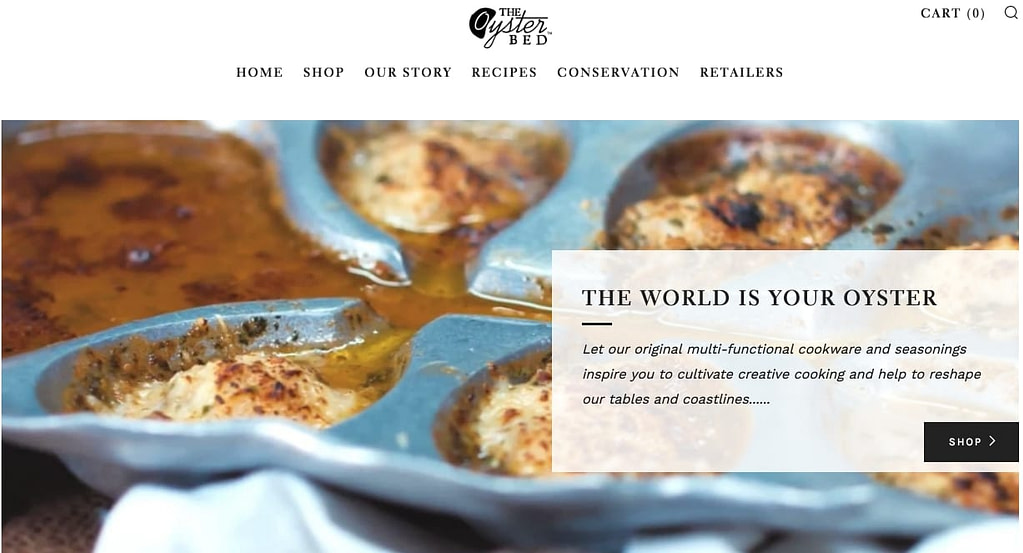


The Oyster Bed started off as a Kickstarter campaign, looking to pre-sell their innovative way of cooking oysters. The great thing about Kickstarter is that it puts the story front and center. After all, you don’t have a product at that stage but a dream and vision.
When you land on their homepage you see the video that got them funded. Further down, you see more about their goals and vision. The entire homepage is one story about how they started and what they hope to accomplish. And if you’re inspired to help them realize this dream, you can head to the product pages.
Your Product page
Put your product in context.
Your prospective customers must be able to envision themselves using your product. After all, if someone sees photos of your product online and can’t easily picture herself using it, why would she buy it?
The most beautiful examples come from UrbanKissed:
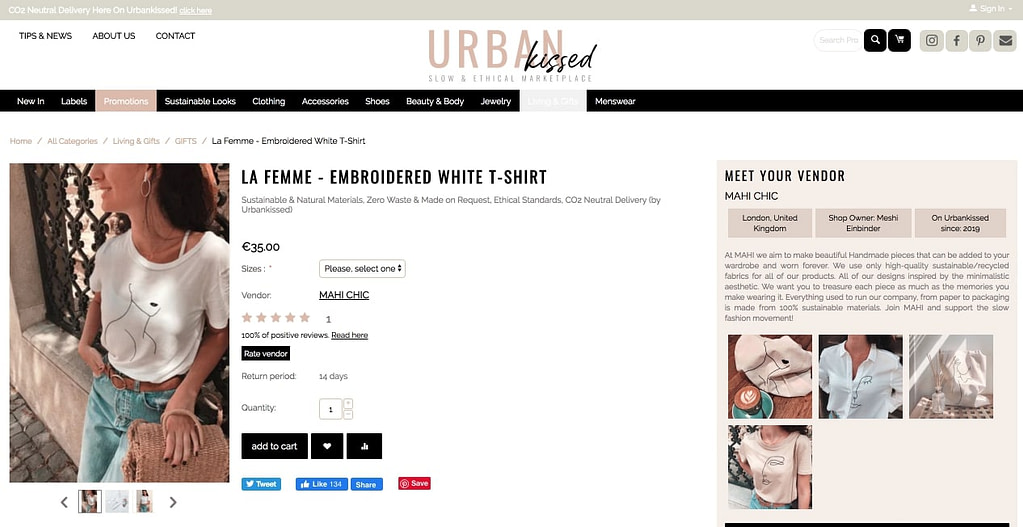


We know how it can be difficult to envision yourself using certain products when they’re removed from context. For example, if someone is looking for a new couch, they likely can’t see themselves using one that’s advertised simply sitting against a blank background.
However, they can very easily envision themselves using a couch that’s advertised in the context of a home, as seen here:



Putting your product in the context will make your customers feel confident that the product will improve their daily life in some way.
Your About Us Page
What moved you to start your business? How has your business grown, and why? What reviews your customers give about you and your product? What do you hope to achieve? Why is your team the best people to deliver on your promises? These are just a few of the questions you might choose to answer on your “About Us” page. This is your opportunity to tell your story.
Shun Cutlery demonstrates it well on their “About us” page where they state that they maintain the Japanese culinary tradition of “shun.”
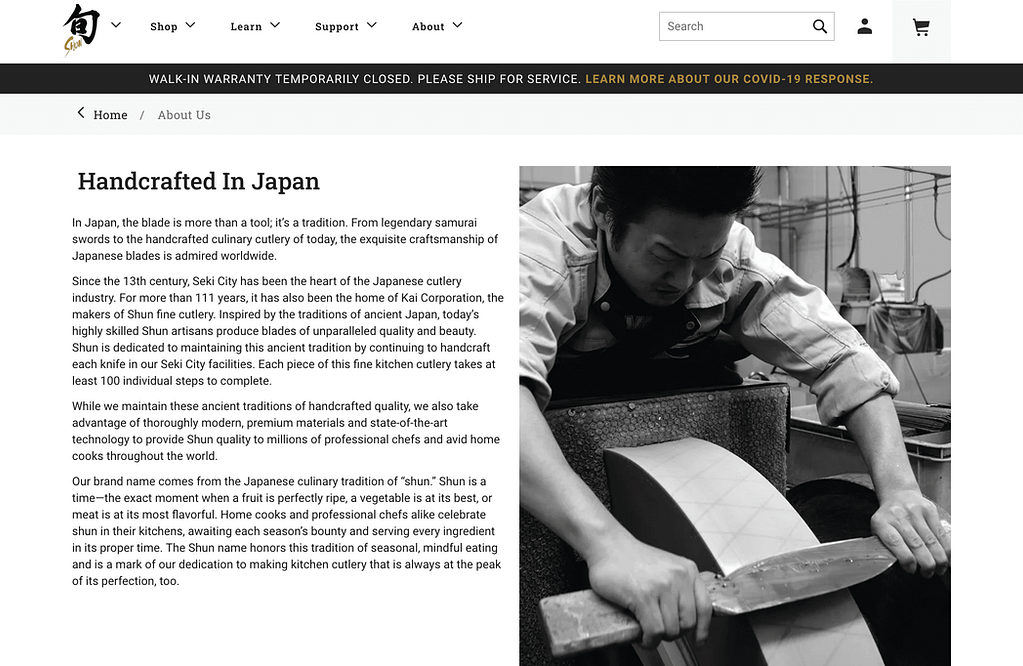


An engaging personal narrative can add the personality your eCommerce website needs to make visitors want to learn more — to click through to your products and services page.
Here is another example from Sleekform Furniture:
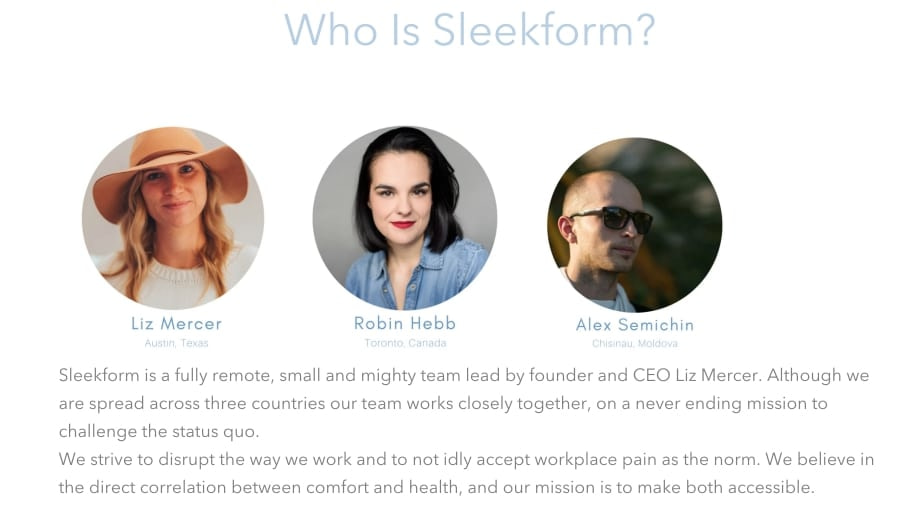


Will Your eCommerce business live happily ever after?
Keep your customers at the center of every decision you make and every piece of content you post.
When people see that you’re doing everything you can to deliver meaningful value to them, they’ll continue to buy from you, so they can see the story you’re telling become a reality for them.
The End.
Hit the button below and let us know what customization you need for your website to be able to tell an effective story to your audience. Our pro code writers will be happy to help you deliver on your ideas!

